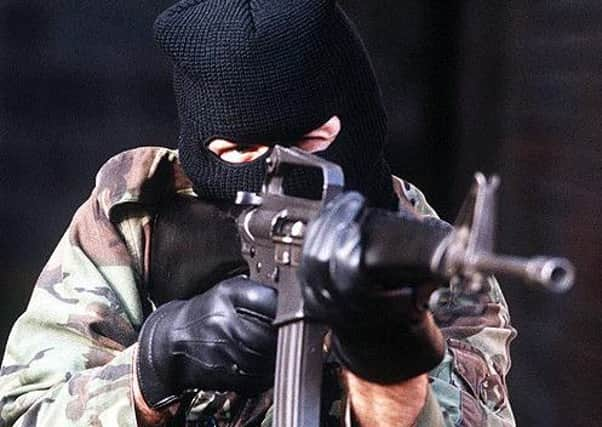Real collusion in past '˜between IRA and UDA'


Those are the thoughts of Dr Susan Phoenix, whose husband Det Supt Ian Phoenix from the RUC counter-terrorist surveillance unit, was one of 25 intelligence officers who died in the infamous Chinook crash on the Mull of Kintyre in 1994.
His wife later co-wrote a book based on his diaries called ‘Phoenix policing the shadows – the secret war against terrorism in the UK’.
Advertisement
Hide AdAdvertisement
Hide AdShe was speaking to the News Letter after Secretary of State Theresa Villiers challenged what she called the “pernicious counter narrative” that the state was responsible for nearly every atrocity during the ‘Troubles’ as the terror groups were allegedly controlled via informers.
Dr Phoenix told the News Letter: “These allegations are absolutely ridiculous. When we were going through Ian’s diaries, Jack Holland told me he was amazed there was no evidence of any collusion whatsoever. And Jack was a republican journalist (now deceased).
“What we did find was much talk between the IRA and UDA about how to put together a peace process that would suit them both in terms of setting themselves up as mafia, controlling criminality, money and drugs.”
Former senior RUC/PSNI officer Norman Baxter, who was PSNI senior liaison officer with the security services, said republicans have now moved into a ‘peace process’ in which Stormont provides a platform for Sinn Fein to “destabilise” society.
Advertisement
Hide AdAdvertisement
Hide Ad“The aim is to move into a psychological phase where the victims of terrorism and their families are ruthlessly exploited to maximise political advantage; they are being used as a weapon against the British state, through an array of forums to destabilise the confidence of ordinary people in what the security forces achieved on their behalf in defeating the IRA terrorist campaign.”
Sean O’Callaghan, a former Irish state agent in the IRA, also rejected the narrative.
“It is a particularly malign and stupid narrative utterly forgetting first principles,” he said.
“I think it is so utterly simplistic as to denigrate extraordinary people who did incredibly hard, heroic and all too often unsung work in the most difficult of circumstances. I mean the police in particular.”
Advertisement
Hide AdAdvertisement
Hide AdJeffrey Donaldson MP, a member of the Parliamentary Privy Council, which has intelligence services oversight, said “thousands” of people are alive today thanks to the infiltration of terror groups.
“Their objective was to prevent death and end violence. They did this by creating fear and suspicion inside terror groups so that they could not operate effectively. This is what forced them all to the negotiating table”.
Innocent Victims United spokesman Kenny Donaldson said: “We welcome the Secretary of State’s acknowledgement in words and now what must follow is a change in policy emphasis.
“The Government and the criminal justice system must pledge itself to doing right by the innocent victims and survivors of terrorism and deliver tangible results.”
Advertisement
Hide AdAdvertisement
Hide AdThat means a resolution to the Enniskillen bomb – which has been in limbo for 10 years – and resources for cases such as Teebane, La Mon, Shankill and Tullyvallen.
But Ed Moloney, author of The Secret History of the IRA, is more sceptical. He believes that by the 1990s one-third of the IRA was working for British intelligence – and that it also had a very high level of control over loyalists, especially the UDA.
All this begs the question, he said: “Who, really, was running Northern Ireland’s war, the paramilitary leaderships or the spooks?”